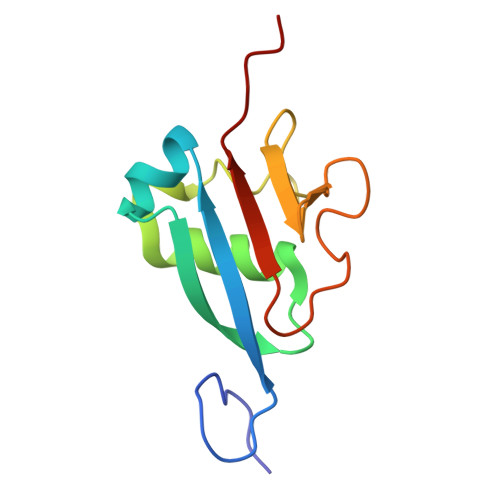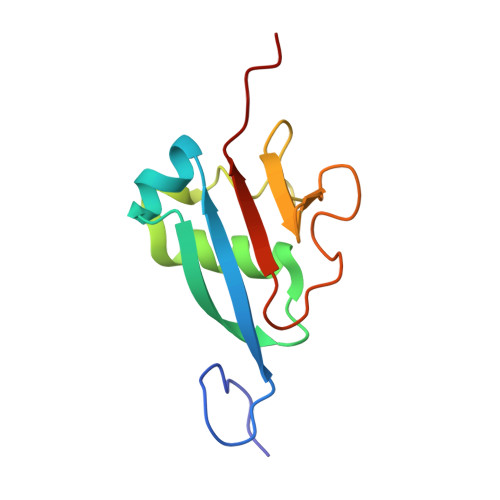Crystal structure of the ubiquitin-like small archaeal modifier protein 2 from Haloferax volcanii.
Li, Y., Maciejewski, M.W., Martin, J., Jin, K., Zhang, Y., Maupin-Furlow, J.A., Hao, B.(2013) Protein Sci 22: 1206-1217
- PubMed: 23821306
- DOI: https://doi.org/10.1002/pro.2305
- Primary Citation of Related Structures:
2M19, 4HRS - PubMed Abstract:
The discovery of ubiquitin-like small archaeal modifier protein 2 (SAMP2) that forms covalent polymeric chains in Haloferax volcanii has generated tremendous interest in the function and regulation of this protein. At present, it remains unclear whether the Hfx. volcanii modifier protein SAMP1 has such polyubiquitinating-like activity. Although SAMP1 and SAMP2 use the same conjugation machinery to modify their target proteins, each can impart distinct functional consequences. To better understand the mechanism of SAMP2 conjugation, we have sought to characterize the biophysical and structural properties of the protein from Hfx. volcanii. SAMP2 is only partially structured under mesohalic solution conditions and adopts a well-folded compact conformation in the presence of 2.5M of NaCl. Its 2.3-Å-resolution crystal structure reveals a characteristic α/β central core domain and a unique β-hinge motif. This motif anchors an unusual C-terminal extension comprising the diglycine tail as well as two lysine residues that can potentially serve to interlink SAMP2 moieties. Mutational alternation of the structural malleability of this β-hinge motif essentially abolishes the conjugation activity of SAMP2 in vivo. In addition, NMR structural studies of the putative ubiquitin-like protein HVO_2177 from Hfx. volcanii show that like SAMP1, HVO_2177 forms a classic β-grasp fold in a salt-independent manner. These results provide insights into the structure-function relationship of sampylating proteins of fundamental importance in post-translational protein modification and environmental cues in Archaea.
Organizational Affiliation:
Department of Molecular, Microbial, and Structural Biology, University of Connecticut Health Center, Farmington, Connecticut, 06030.
















